Spectres of the Spectrum I, Brainrain, Alaska Projects, Sydney, 2013
Installation. 15 anatomical model brains, resin, telecommunications cabling, LED devices, electricians tape, timber.
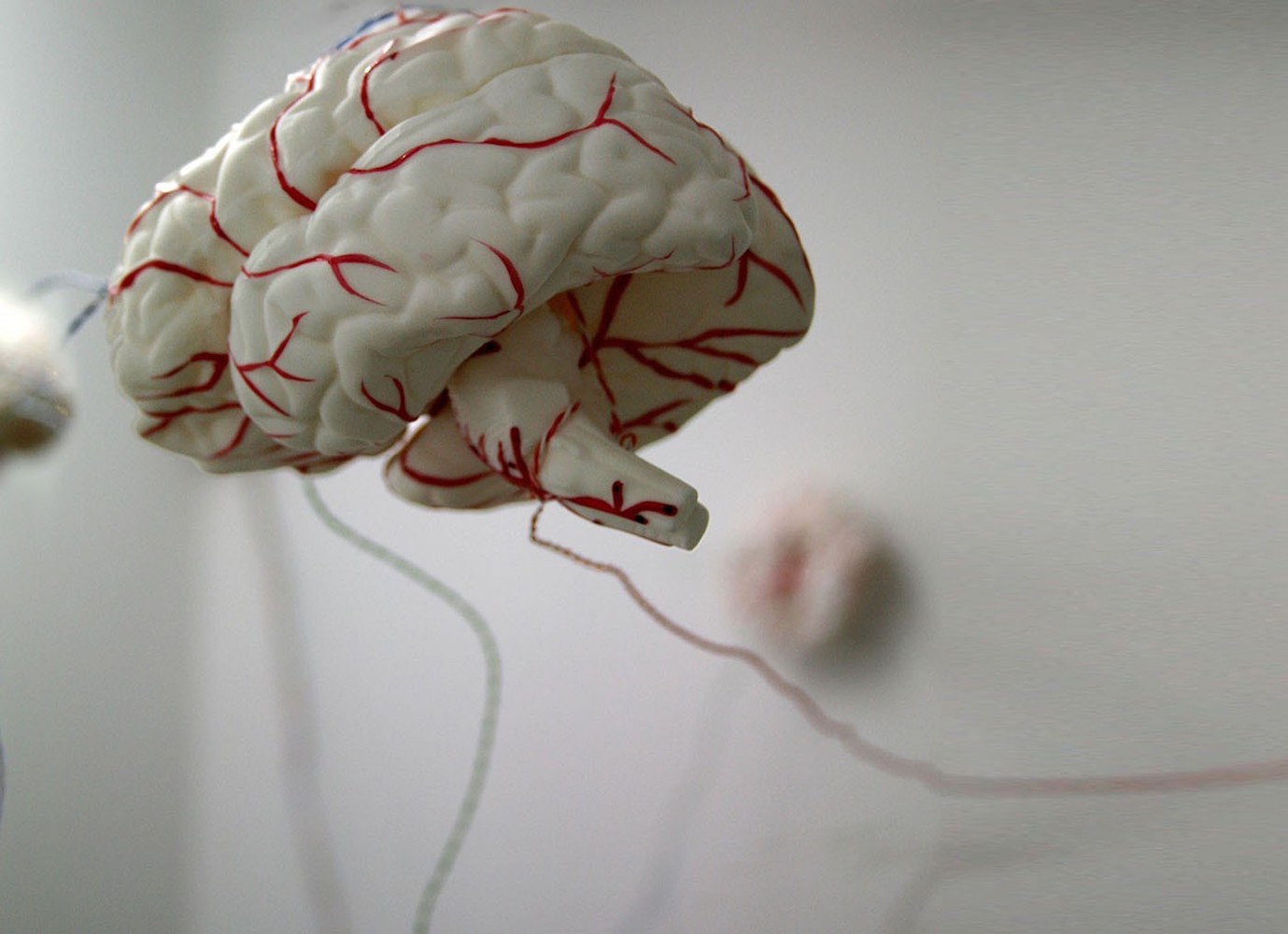
Gianni Wise, “Spectres of the Spectrum I”, 2013 (detail), anatomical model brain, telecommunications cabling. Photo courtesy of the artist
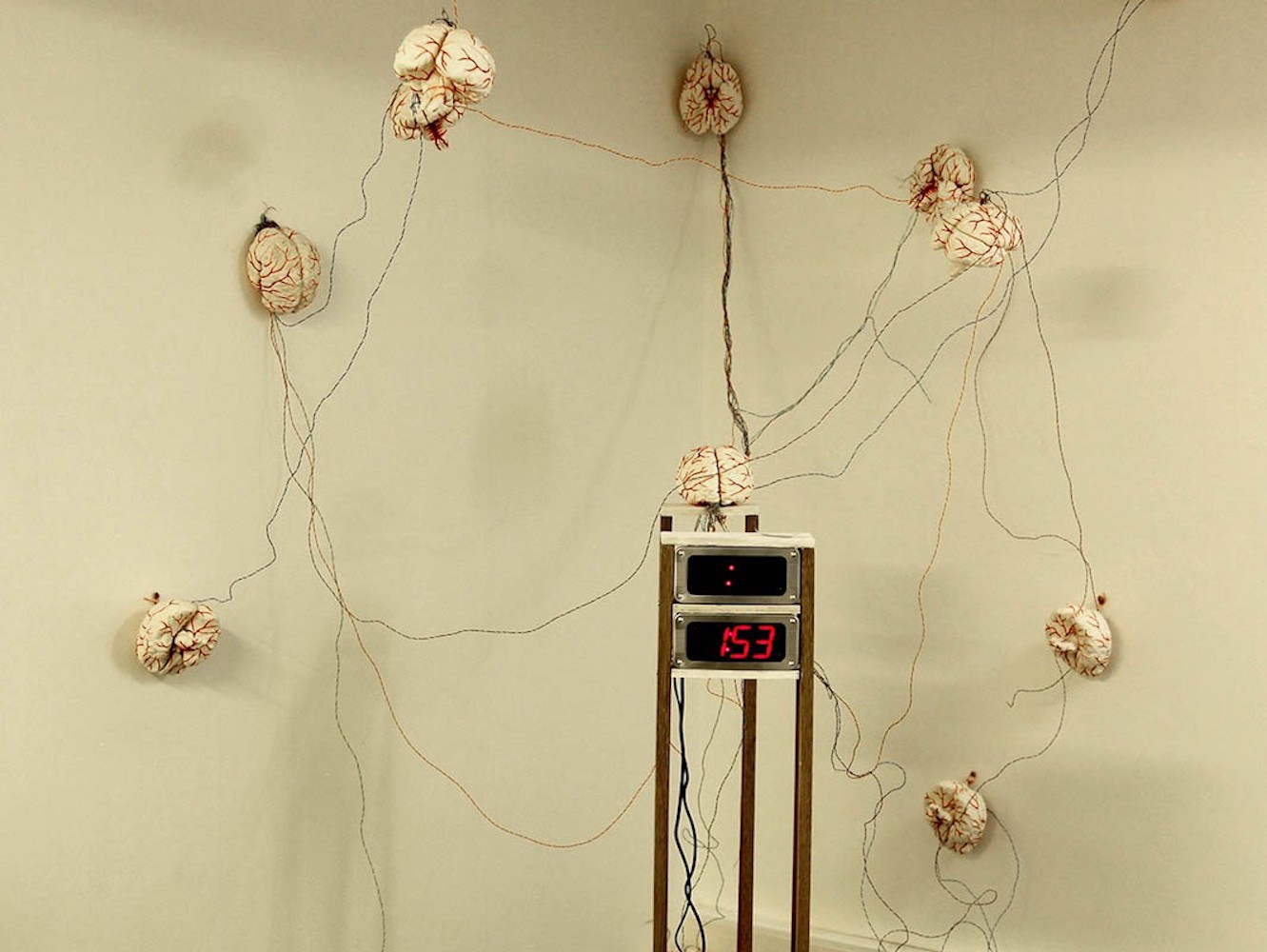
Gianni Wise, “Spectres of the Spectrum I”, 2013 (install view), anatomical model brain, telecommunications cabling. Photo courtesy of the artist
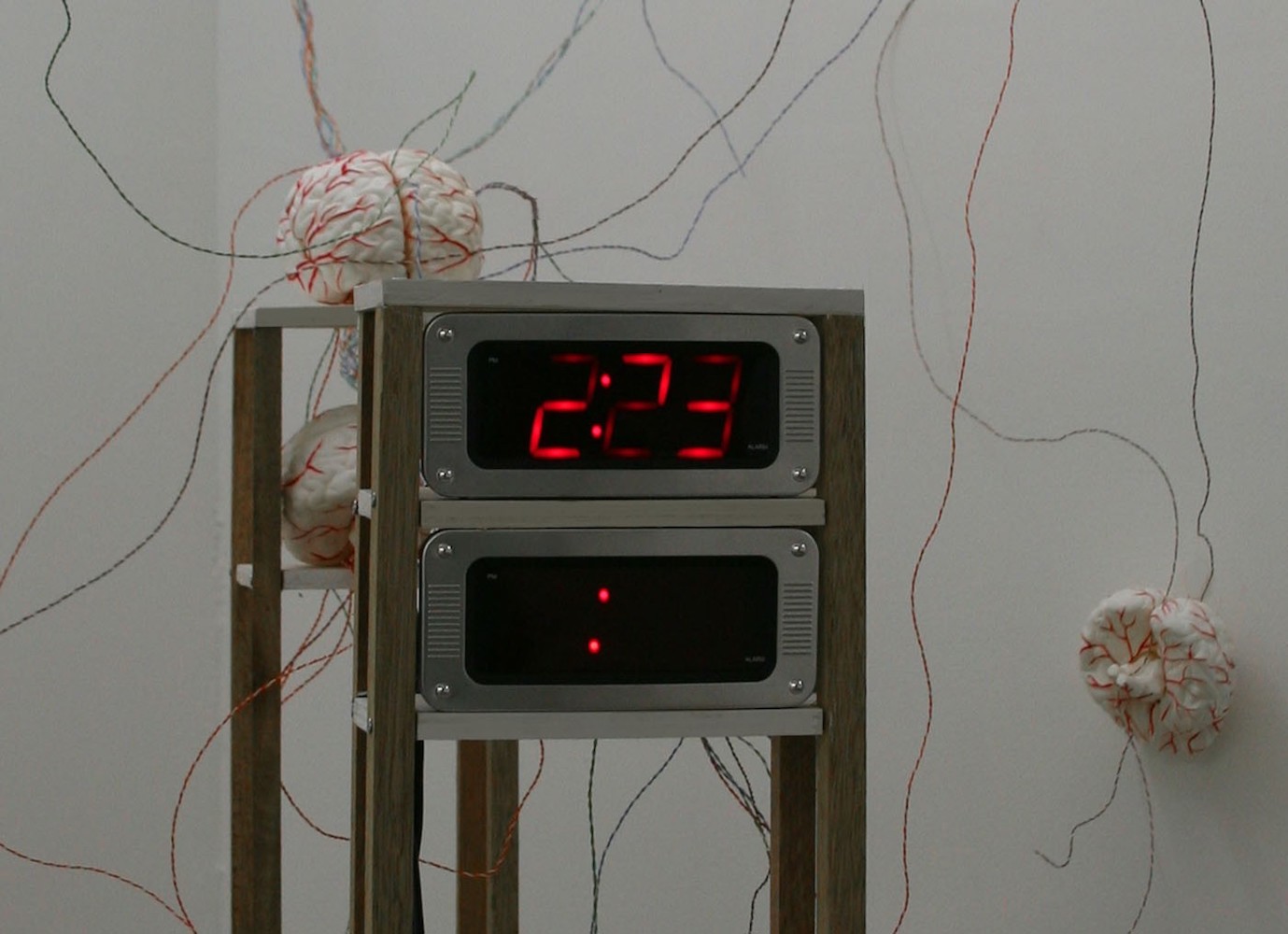
Gianni Wise, “Spectres of the Spectrum I”, 2013 (install view), anatomical model brain, telecommunications cabling. Photo courtesy of the artist
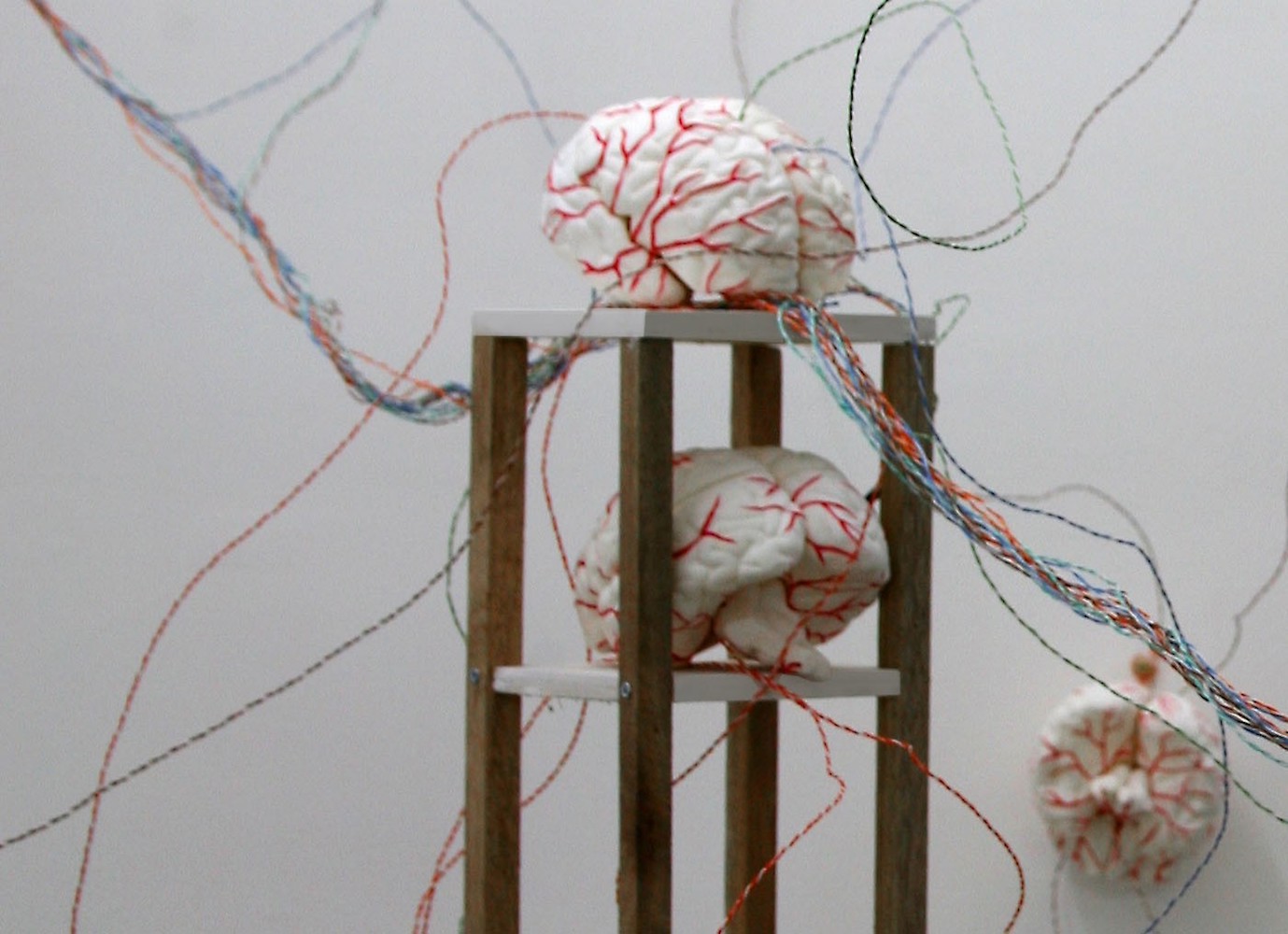
Gianni Wise, “Spectres of the Spectrum I”, 2013 (install view), anatomical model brain, telecommunications cabling. Photo courtesy of the artist
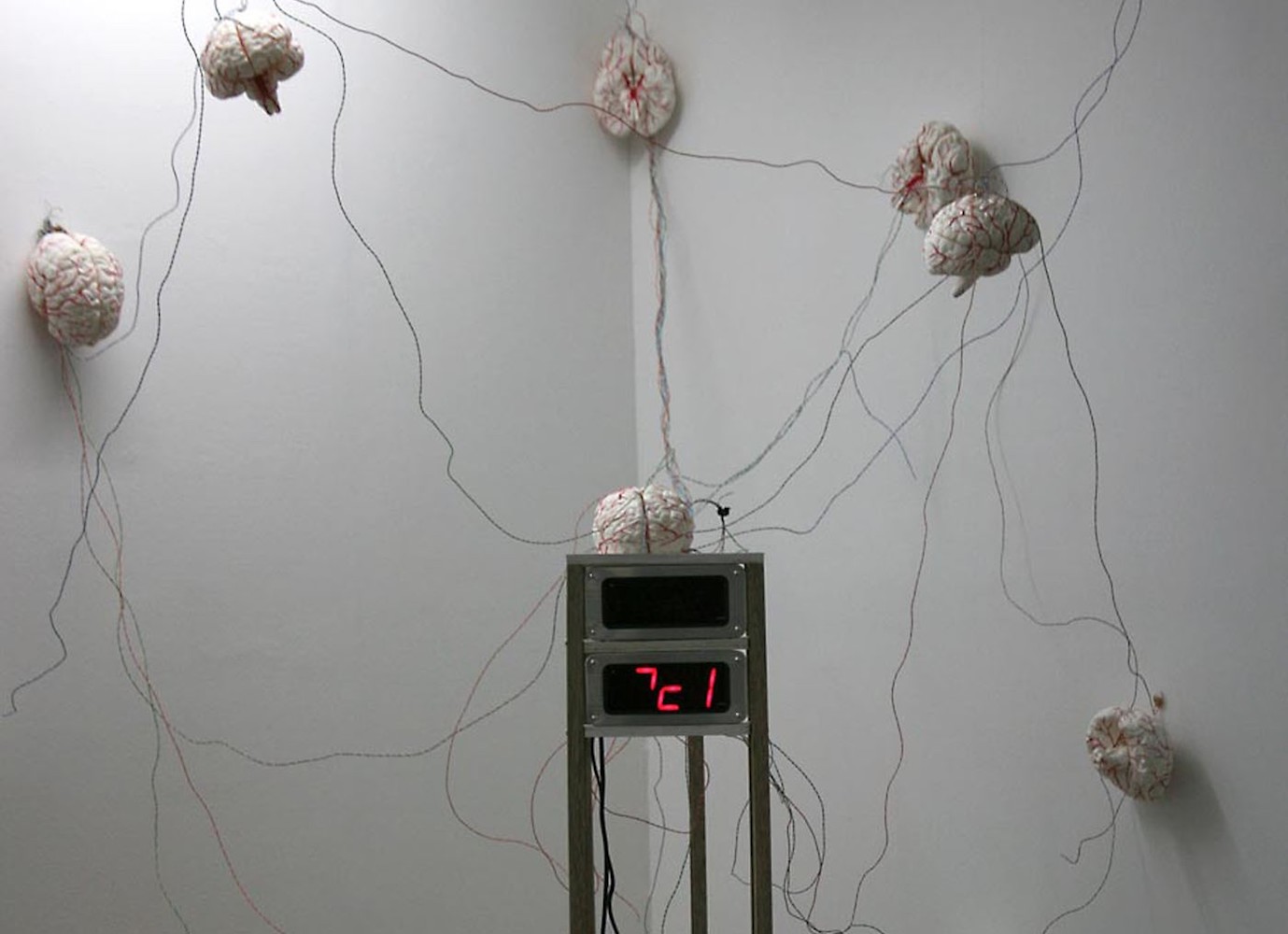
Gianni Wise, “Spectres of the Spectrum I”, 2013 (install view), anatomical model brain, telecommunications cabling. Photo courtesy of the artist
Jacqueline Drinkall, Warren Armstrong & Gianni Wise, curated by Gianni Wise.
Catalogue essay J. Drinkall
“Wanting connections, we found connections always, everywhere, and between everything” (Umberto Eco, 1988). Gianni Wise has used this quote as central to his curation of the exhibition Brainrain at Alaska Gallery. Brainrain includes his own work with that of Warren Armstrong and myself, Jacquelene Drinkall, as “a humorous investigation of the role of social paranoia and conspiracy theories in the way we perceive the world” (Gianni Wise, 2013). “A little bit of paranoia might be a good thing, especially when tempered with creativity and humour. […] What is the opposite of paranoia – epiphany, euphoria, empathy, connectedness, faith and/or trust? Too much of that directly in the wrong way is also unhealthy. […] As Richard Grayson asked in his curation of the Sydney Biennale “[…] how do we necessarily distinguish between a telepathic gift and a mind disturbed by paranoid vision? Twentieth-century critics like Thomas Szaz, R.D. Laing, and Deleuze and Guattari have argued that we can’t, pointing to the institutionalisation and enculturation of insanity.”
(MA Greenstein, 2002; Drinkall 2006)”
A review from Andrew Frost in The Art Life previews the work as:
We all know 9/11 was an inside job. The Twin Towers came down not because aircraft were flown into them but because
unknown individuals using controlled demolition reduced the buildings to rubble. And there were no aircraft anyway, and if
there were, they had visible missiles on the underside of their fuselages that were used to blow up the towers before impact.
And that giant cloud of smoke rising from the debris? That was a visual effect added later by animators working for Walt
Disney and you can tell it was a fake because they left the face of Goofy in the cloud as a clue.
The conspiracy theories of 9/11 are just one of the hotspots for conspiracy buffs – and there are plenty more too – from the
mundane “Who killed Kennedy?” conspiracy to the outlandish Reptilian-aliens-manipulating-world-politics theory. Brain rain,
curated by noted conspiracy buff Gianni Wise brings together his recent work on paranoia, with UFO-related material by
Jacqueline Drinkall and Warren Armstrong, the creator of augmented realities. Quoting Umberto Ecco,
Wise notes that in “wanting connections, we found connections always, everywhere, and between everything.”